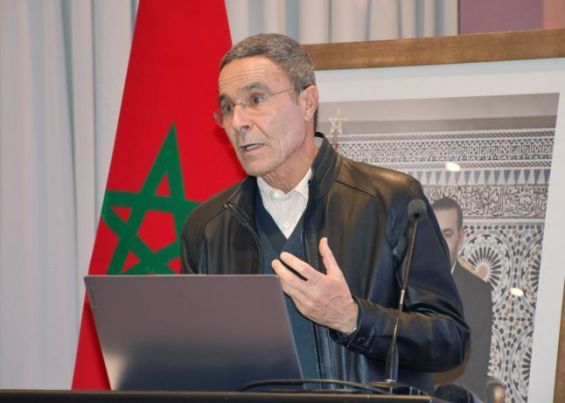2,946 people were killed, 5,674 were injured, and 2.8 million others in 3,000 villages were affected by the devastating earthquake that struck the High Atlas regions of Morocco on September 8, 2023. Shortly after the tragedy, the government reacted by mobilizing the Royal Armed Forces (FAR) and other state actors to ensure emergency housing.
Temporary relocation arrangements were put in place—an effort praised by some local actors—but since then, the coverage and quality of the solutions provided have proven insufficient, according to the annual report of Transparency Maroc. Despite the cold winter and heavy snowfall this year, many victims still have to cope with limited resources and means to protect themselves.
Armed with its stated commitments, the state had announced an Integrated Post-Earthquake Reconstruction Program for the period 2024-2028, with a colossal budget of 120 billion dirhams. This program was intended to cover several areas: housing reconstruction, infrastructure rehabilitation, improving access to remote areas, and reviving local economic activities. However, Transparency Maroc notes that during the first year, public action fell short of expectations and stated promises.
An ambitious reconstruction program poorly executed
One of the main shortcomings of the Post-Earthquake Reconstruction Program is the abnormally slow pace of reconstruction. One year after the earthquake, disbursement rates remained very low—22% for the third tranche and just 3% for the fourth tranche of the program—while ongoing delays at construction sites continued to hinder the effective delivery of aid. Added to that, the high inflation of construction materials and transportation costs heavily weigh on the realization of projects.
The government quickly adopted several legislative texts and decrees to manage the crisis. The creation of the «Special Fund for the Management of Earthquake Effects» (Fund 126) and the establishment of the High Atlas Development Agency (ADHA) were among the key measures. However, the ADHA, which was supposed to serve as the operational body responsible for implementing the program, was still not fully operational more than a year after the earthquake. Its Director General was only appointed in October 2024.
The report also highlights the absence of a participatory approach. Strategic decisions, made within a few days in urgency, do not seem to have integrated consultations with local actors and the affected population. This lack of consultation contributes to a disconnection between the announced measures and the realities on the ground, increasing the frustration of the victims.
Opacity and reduced access to information
Another major point of Transparency Maroc's criticism concerns the transparency of public action. Data related to budget management—though presented as overall figures—remains opaque and difficult to verify. The observatory deplores the lack of regular publication of detailed reports on the use of allocated funds, preventing citizens from accessing information. This communication problem fuels a sense of injustice among the affected populations, who are often left unaware of the disbursed amounts and the criteria used for allocating aid.
Beyond the figures and administrative delays, the report highlights the dramatic social impact of the earthquake. The slow pace of reconstruction has sparked a protest movement among the victims. Beyond material hardships, the consequences for education and healthcare are deeply felt. Promises to relocate thousands of students and rehabilitate school facilities have not been fulfilled, leaving the 2023-2024 school year in these areas as a «lost year», particularly for middle and high school students. In the healthcare sector, the lack of operational facilities in the affected areas exposes populations to heightened risks.
Finally, the report laments that the reconstruction process is largely being carried out using concrete, contrary to royal directives advocating for buildings that reflect the region's heritage. According to official assessments, the road rehabilitation program is progressing, particularly on Road N7, thanks to funding from Fund 126.
However, the Observatory has been unable to verify this data through the public procurement portal. Additionally, the distribution of direct aid has been generally successful, despite complaints about the remoteness of bank branches and high transfer fees. To date, the disbursed budget amounts to 1.7 billion dirhams.
In conclusion, the citizen observation report, based on official documents and field testimonies, calls for a reevaluation of governance mechanisms and a more transparent, participatory approach to mobilization.





 chargement...
chargement...













